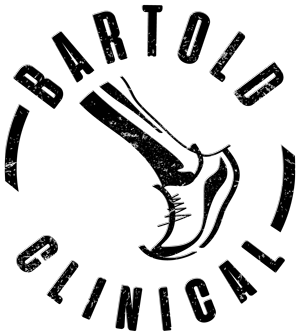
One of the 2 great paradigms underpinning the running footwear design industry over the past 45 years has been the “control” of foot pronation (the other being injury prevention through cushioning). The theory is that by manipulating the design of the shoe, in particular the midsole, in such a way that it offers more medial…
Simon Bartold
Director of Bartold Clinical
1 likes
7 comments
7 responses to “Lateral Valgus Wedging Reduced Foot Pronation? What??!”
Leave a Reply
You must be logged in to post a comment.



Is this going along the same lines as the “twisted plate theory” that Doug Richie talks about for abnormal pronation?
Have to be honest Colin and say I am not familiar with this.. will do some reading and get back to you!
Sarrafian seems to be the guy that came up with the twisted plate theory and Doug Richie uses it for Tib post dysfunction.
Kogler GF, Veer FB, Solomonidis SE, Paul JP. The influence of medial and lateral placement of orthotic wedges on loading of the plantar aponeurosis. J Bone Joint Surg Am. 1999;81(10):1403-1413.
Sarrafian SK. Functional characteristics of the foot and plantar aponeurosis under tibiotalar loading. Foot Ankle Int. 1987;8(1):4-18.
Oh right.. that is Geza Kogler’s paper from way back. I know Geza well and have spoken a lot about this with him. He used lateral wedging to specifically address strain in the plantar fascia (which works a treat!), so, it is a little bit different.
Simon, I’d like to hear your opinion on the practical application of these findings in a running shoe store setting.
I think that is for sure an article Jeff.. thanks for the suggestion! Best Simon
I am trying to envision this device and what it’s doing biomechanically at the foot level. In gait, for excessive rearfoot eversion (STJ pronation) to occur and be be maintained in midstance, the forefoot has to provide compensatory inversion, which is facilitated at the mid-tarsal joint. It may be possible that the forefoot inversion, if unchecked, will contribute to even more rearfoot eversion as weight is transfering to the forefoot. So a foot, on an orthotic device that has mild medial arch support and a lateral forefoot wedge starting distal to the mid-tarsal joint, will be met with resistance to STJ overpronation at midstance phase of gait by the lateral wedge resisting the compensatory forefoot inversion. If the forefoot inversion is effectively resisted, this should resist excessive rearfoot eversion (and stj pronation) as well.